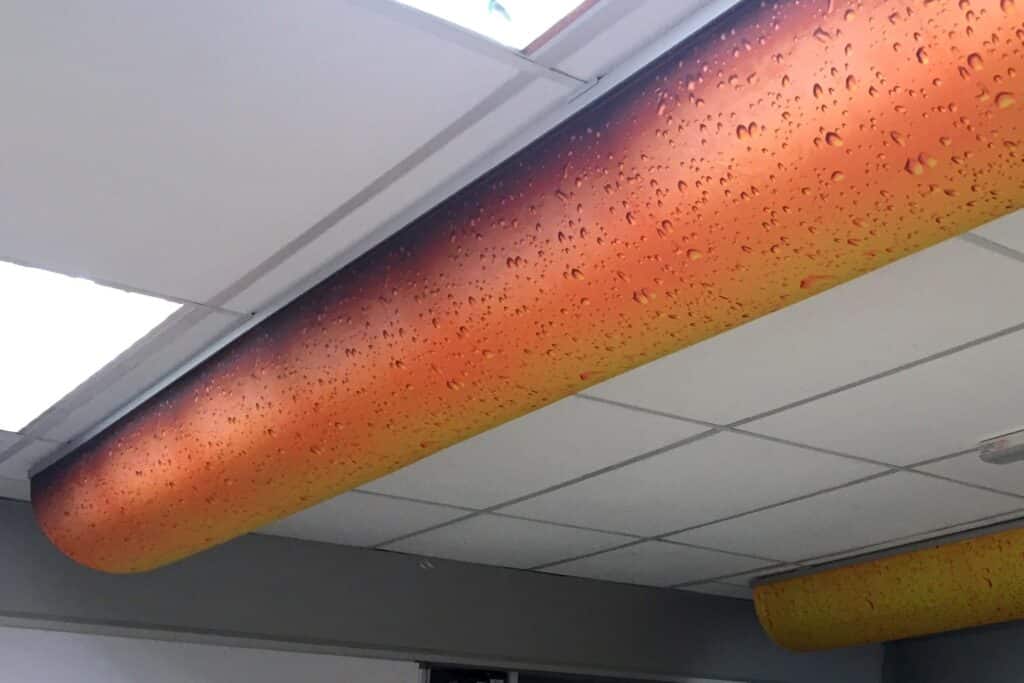Why Use Fabric Ducts in Ventilation Retrofitting


Why retrofit?
Indoor ventilation has become a hot topic in recent months. Its importance to human health cannot be overstated. There is a renewed drive to utilise health-promoting heating and ventilation systems in construction projects, from institutional buildings to housing blocks, in an effort to maintain public health. While this is a trivial matter in new projects, it can be challenging in existing buildings whose original design used dramatically different ventilation approaches.
There are many reasons why new ducting may need to be retrofitted. Often it is merely a case of the existing ductwork reaching the end of its design life – an excellent opportunity to update it to the latest methods and materials, rather than making a direct replacement. In other cases, ventilation retrofitting is required as part of an overall project to modernise the building. For example, energy efficiency improvements usually involve the installation of new insulation. The building becomes more airtight than before and ultimately requires a new ventilation system that works with the new airflow parameters.

What are the obstacles to retrofitting ducting?
Cost can be a barrier to retrofitting plans, especially in sectors where budgets tend to be stretched, such as education. In the private sector, economic uncertainty can lead to hesitation around projects like upgrading ventilation.
Space for utilities is often at a premium in older buildings not designed to hold all the modern building services expected today. It is often difficult or impossible to hide the ductwork within existing ceilings, necessitating an exposed solution. Such an approach can raise concerns about aesthetics and require careful planning as a result.
Structural factors can also cause difficulties when it comes to retrofitting ventilation ducting and diffusers. In very old buildings, whose structure and layout wasn’t designed with modern ventilation in mind, adapting the structure to accommodate the ducts can turn a routine job into an onerous endeavour. Working around weaker ceilings or protected structures increases design complexity and time to completion, adding to the project’s cost.
Why use fabric ducts in your retrofit?
Luckily, a duct solution can overcome all the above problems: Prihoda fabric ducts and diffusers. Fabric ducts are:
Lightweight: at 100-400 g/m2, fabric ducts are so lightweight they can be installed in temporary structures such as marquees.
Bespoke: every installation of our fabric ducts and diffusers is custom-made for the project. As a result, they are perfectly adapted to the dimensions, layout and use of the space. New build or not, the outcome will be the best fit for the project.
Affordable: fabric ducts are cheaper and much quicker to install than traditional rigid steel ducts, minimising downtime and associated costs. Thanks to their lightweight material, it is possible to install textile ducting on virtually any ceiling type.
Attractive: endlessly versatile fabric ducts are particularly suited to projects such as retrofits requiring exposed ductwork. With nine stock colours and our Prihoda Art service, fabric ducts can be an eye-pleasing option in any setting. Where aesthetics are a priority, we can install internal rings and tensioning systems to ensure that the ducting always looks its best.
Easy cleaning and maintenance, and excellent durability are some other advantages of using Prihoda fabric ducts. For ultimate effortlessness, we can take care of the entire process from design to installation of the ductwork in your ventilation retrofitting project.
If you’d like to know more, please do not hesitate to contact us.
Looking for more information?
Our experts are on hand to answer any questions. Why not give us a call or drop us a message, We’ll work with you to find the right solution.
Contact us


